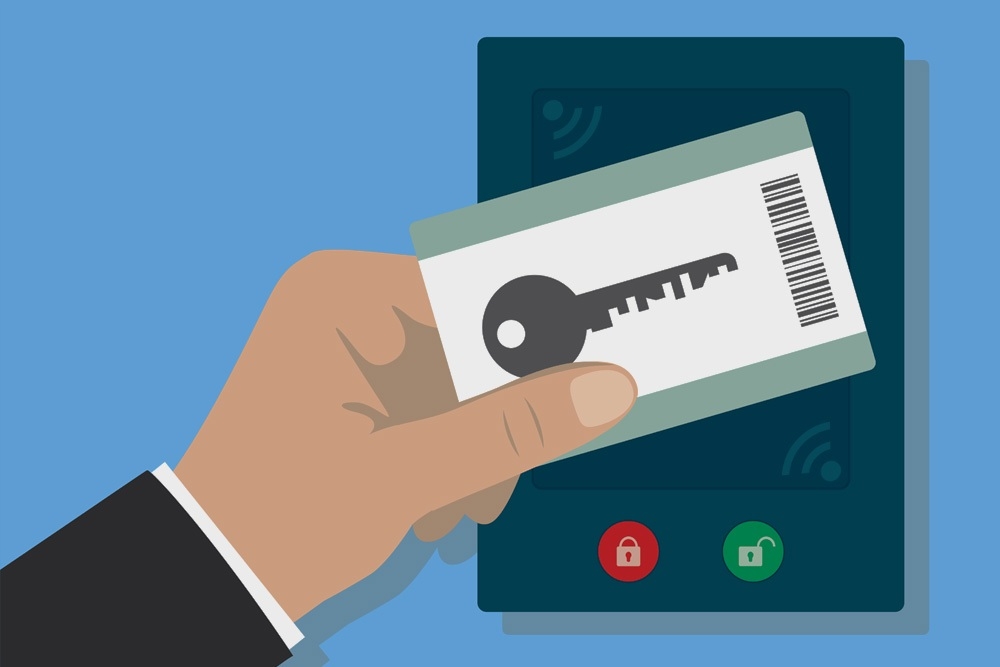
With all of the emphasis placed on cybersecurity, it can be easy to accidentally neglect physical security. Even with the potential for hacking attempts and data breaches, the risks of burglary or breaking and entering haven't really decreased. Here are eight things all businesses should have in order to properly secure their facilities:
1. Sensors and Alarms
It might sound obvious, but it's important. The main entrance is probably alarmed, but what about all of the other points of entry? Emergency exits, delivery bays, and windows are often neglected. If there's a point where an intruder could conceivably break in, it should have its own lock, sensor, and alarm. Alarms and sensors also need to be tested regularly.
2. A Backup Power Source
Don't let an opportunistic intruder take advantage of a power outage or cut power to the facility. Make sure all security measures are connected to a backup power source, so they'll keep functioning even if there's an interruption to the facility's primary power.
3. A Professional Security Assessment
It's not always easy for a facility owner or manager to think like an intruder. A determined thief knows how to spot opportunities that don't leap readily to the untrained eye — here's where a professional security assessment can help.
These assessments outline exactly where deficiencies exist, as well as strategies to correct them. By enlisting the aid of an experienced professional, such as Roman, facility managers can head problems off at the pass, correcting potential security risks before they become trouble.
4. Access Control
Keys can be copied, and a skilled intruder can pick a keyed lock. Locks controlled by access cards or biometrics can't be picked, it's harder to copy a card or fingerprint, and employees can be added or removed to an access whitelist as necessary. There's no need to replace the entire lock if someone loses a key or change passcodes every time an employee stops working for the company.
5. Photo Badges and Visitor's Passes
Photo identification makes employees easily and immediately identifiable to visitors, and vice versa. If someone doesn't have a photo badge or a visitor's pass, they can be immediately picked out as a potential security threat. Badges can even be color-coded for large businesses with many departments and combined with access control measures like magnetic stripes or barcodes.
Photo identification cards don't cost much to make, and third-party companies can produce them with nothing more than a clear picture of the employee. Badges can even be printed on-site as needed.
6. Surveillance
Video surveillance is a great way to both deter intruders and supply important security information. In the event of a break-in, a camera can show everything ranging from what the intruder used to gain access, to identifying information like their physical appearance and vehicle.
Security cameras have come a long way since the days of silent, grainy, low-resolution black and white footage in banks of televisions, too. Now, they can record continually, clearly, in color, and be monitored remotely.
7. A Way to Physically Dispose of Information
Erasing files from a computer's hard drive doesn't actually remove them. Instead, it just earmarks that portion of the hard drive to be overwritten, and the files are still potentially recoverable.
Getting rid of outdated technology in a secure way isn't always the easiest thing to do, especially for small businesses. As a result, a lot of small businesses end up with storage spaces full of old computers, cell phones, physical files, and other objects that could be disastrous in the wrong hands.
Having a way to properly destroy hard drives and documents is of vital security importance, whether it's on-site using a shredder, or by contracting a professional shredding service.
8. A Culture of Security
Believe it or not, experiments have shown that it's surprisingly easy to gain entrance to a business by holding a clipboard or wearing a yellow vest. As with phishing and cyber-attacks, people are often very willing to give strangers access if they think they are there in some official capacity. All of the locks, lights, and alarms in the world won't matter if a well-meaning employee lets an intruder in.
Make sure employees know how to recognize contractors and implement proper protocols for keeping track of visitors. Impress the need for security measures on employees and communicate clear instructions and expectations on new hires.
Poor physical security is more than a risk to assets and employee safety; it can also impact a business' reputation. Clients are unlikely to trust a facility with their goods, data, or themselves if they know there's a risk that that facility might be compromised.
By securing access points, providing backup power, undergoing a professional security assessment, setting up good access control and surveillance, implementing photo badges, having a way to properly dispose of physical data, and creating a culture of security, facility owners and managers can make sure their businesses are as safe as possible.
Is your business’s physical security sufficient? Roman is highly skilled in investigating and evaluating physical locations for vulnerability to outside threats. Once assessment is complete, a final risk avoidance brief is provided. To request a consultation contact Roman by calling us at 800.422.9032 or by sending us an email.
